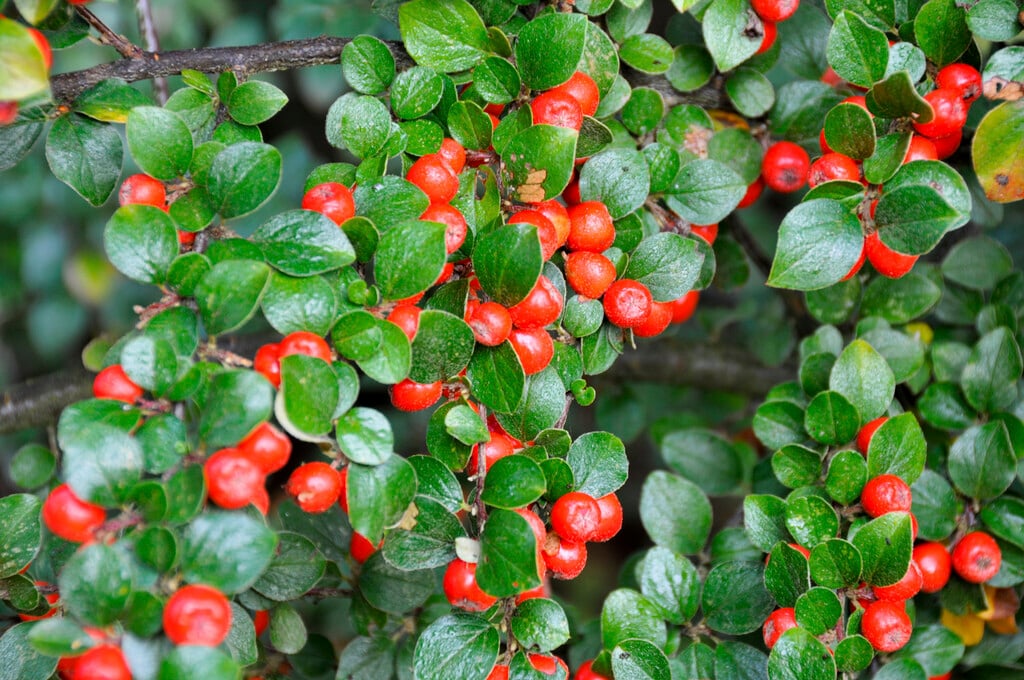Cotoneaster splendens
gleaming cotoneaster
Rounded, deciduous shrub about 2m tall, with small mid-green to greyish-green rounded leaves, turning red in autumn. Clusters of pink-tinged white flowers with rose-pink margins, in early summer are followed by rounded bright orange fruit
Synonyms
Cotoneaster 'Sabrina'Cotoneaster splendens 'Sabrina'
see moreCotoneaster distichus var. tongolensis misapplied

Buy this plant
Size
Ultimate height
1.5–2.5 metresTime to ultimate height
5–10 yearsUltimate spread
1.5–2.5 metresGrowing conditions
Moisture
Well–drainedpH
Acid, Alkaline, NeutralColour & scent
| Stem | Flower | Foliage | Fruit | |
| Spring | Green Grey Silver | |||
|---|---|---|---|---|
| Summer | White Pink | Green Grey Silver | ||
| Autumn | Red | Orange | ||
| Winter |
Position
- Full sun
Aspect
South–facing or West–facing or East–facing
Exposure
Exposed or Sheltered Hardiness
H6Botanical details
- Family
- Rosaceae
- Native to GB / Ireland
- No
- Foliage
- Deciduous
- Habit
- Spreading branched
- Potentially harmful
- Fruit are ornamental - not to be eaten. Wear gloves and other protective equipment when handling. Pets: Fruit are ornamental - not to be eaten - see the HTA guide to potentially harmful plants for further information and useful contact numbers
- Genus
Cotoneaster can be deciduous or evergreen shrubs or small trees, with simple, entire leaves and clusters of small white or pink flowers in spring and summer, followed by showy red, purple or black berries
- Name status
Correct
- Plant range
- China (Sichuan)
How to grow
Cultivation
Grow in any well-drained soil in full sun
Propagation
Propagate by softwood cuttings (greenwood cuttings) in early summer
Suggested planting locations and garden types
- City and courtyard gardens
- Coastal
- Cottage and informal garden
- Wildlife gardens
- Low Maintenance
- Hedging and screens
Pruning
Pests
May be susceptible to aphids, woolly aphid, scale insects and cotoneaster webber caterpillar
Diseases
May be susceptible to fire blight and honey fungus
Get involved
The RHS is the UK’s gardening charity, helping people and plants to grow - nurturing a healthier, happier world, one person and one plant at a time.